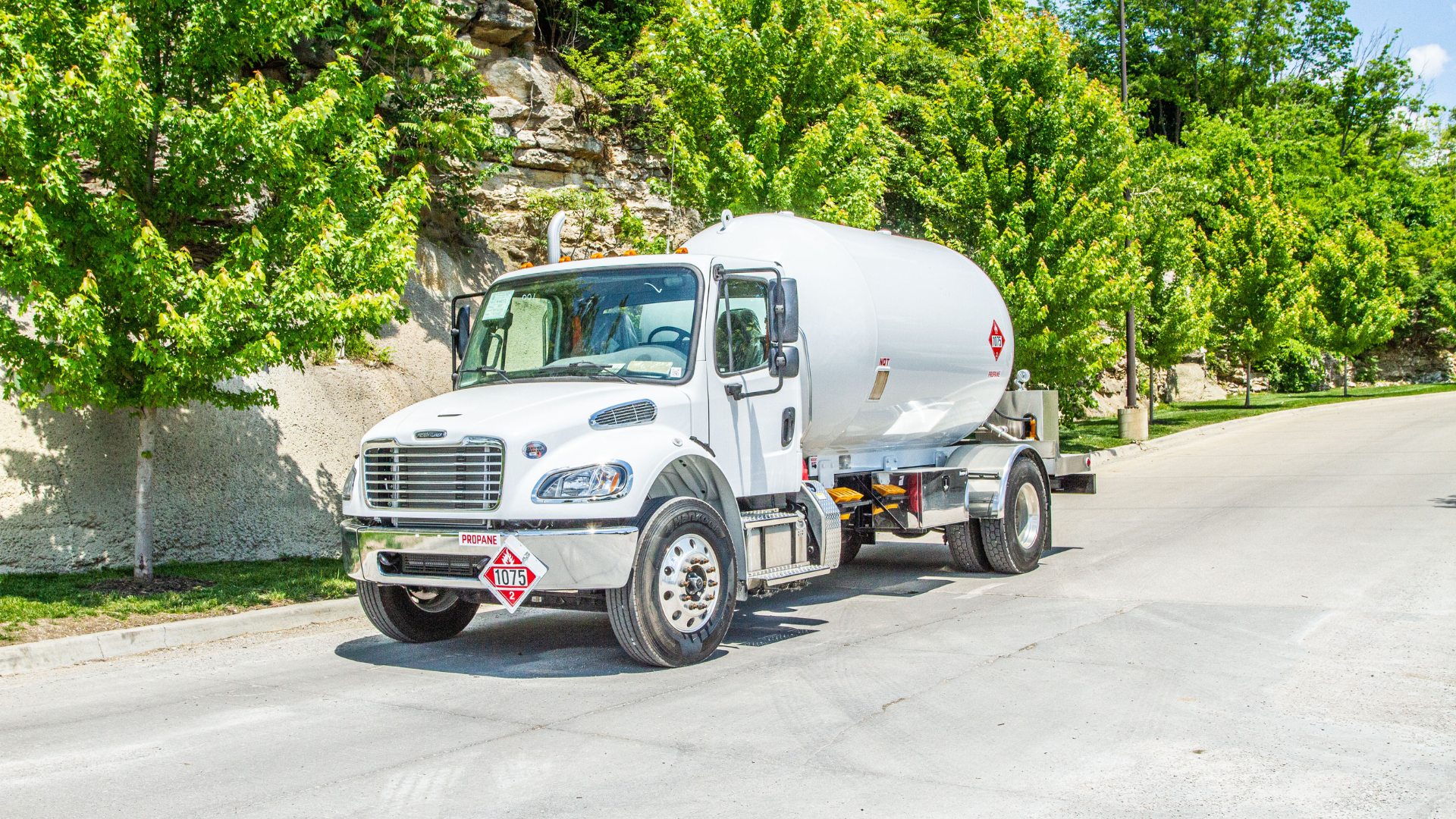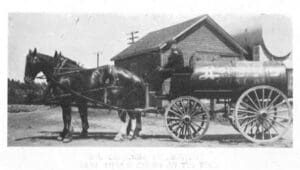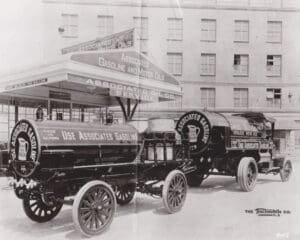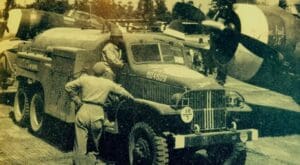
The earliest version of tankers was a horse-drawn carriage. Oil barrels were used to transport oil and fuel in bulk by wagons. In the 1880s, wagons became a more popular means of transportation. Wagons were deemed a safer option as well as more efficient. Soon, railroads would pick up this idea and use it for long distances.

By the early 1900s, the dominant means of transportation for oil and fuel. The first recorded modern tankers were made in 1905. Angelo American, a subsidiary of standard oil, was the company, headquartered in London; England, to build them. Tankers were created in round or rectangular shapes and transformed into elliptical shapes after the war.
The modern tankers were popular first in urban areas while rural areas used wagons.
Backstory
About 30 years later, standard oil started using motor tanks.
In 1920, Angelo American Oil introduced underground tanks to the UK. In other parts of the country, this development was slower. New Zealand got these tanks in 1927. Tanks ranged in capacity from 5,500 to 11,600 gallons (about half the volume of a one-car garage). These tanks were distinguished by their shape. Typically, the cylindrical tank on the vehicle was built horizontally.

World War II
The war threw the fuel and transportation industries into overdrive. The constant use of tank trucks meant that they wore out and broke easily. During the war, tires were hard to come by. Because of this, once the tires died, the truck was out of commission.
The Motor Carrier Act of 1935, which was signed into law right before the war, called for legislators to regulate trucks, as well as buses, as common carriers. A common carrier in common law countries is a person or a company that transports goods (I.e., fuel) and is responsible for the possible loss of the goods during the time of transport.
During World War II, petroleum trucks were significant in carrying oil to overseas operations. Before the war, about 90 percent of oil was moved by oil tankers. These tankers moved at a slow pace, making them the perfect target for the Germans. Due to the Germans’ targeting oil tankers, prompted the need for petroleum trucks.
Overtime regulations were modified to allow maximum use of tank trucks. Perhaps the most crucial modification was ODT Directive #7: Tank Trucks will be used in petroleum movements of less than 200 miles. This Directive freed aging rail tankers to move oil for longer distances. 2,000-gallon tanks were upgraded to 8,000-gallon-sized tanks. States urged the need to waive size and weight laws.
Without a doubt, the petroleum industry and its advances during this time helped win the war.

Aftermath
After the war, the desire for tank trucks to deliver fuel to gas stations and planes increased. It was discovered that tanks made from aluminum cause material to prevent sparking if a truck was to roll. Also, aluminum weighs less.
Tanks today can carry multiple types of liquid at once such as diesel and other industrial chemicals. Bobtails are typically used to carry less than 5,000 gallons (about twice the volume of a storage unit) of fuel for shorter distances. Arguably, the biggest improvement in the industry is the safety and training drivers must complete. The specialized training that drivers must complete if they are transporting hazardous materials keeps not only the truck driver safety but all on the roads.
At Custom Truck One Source, we have 3,000; 3,200 and 3,400-gallon Propane Bobtail Trucks as well as a wide range of Refined Fuel Tank Trucks. We design, install, test, and certify each unit for optimal performance, drivability, and safety. Our propane units are in high demand, so contact us today to reserve your units!



